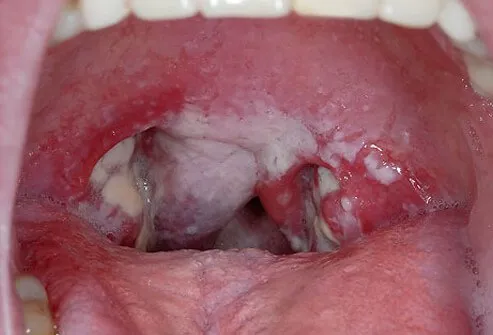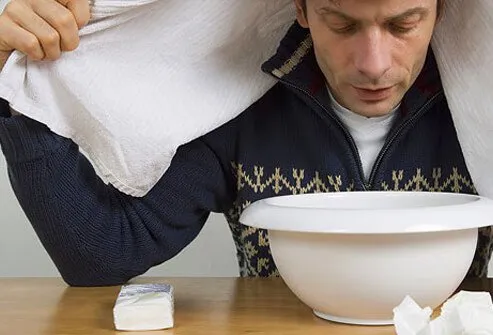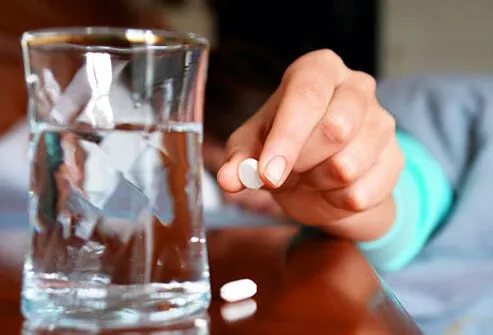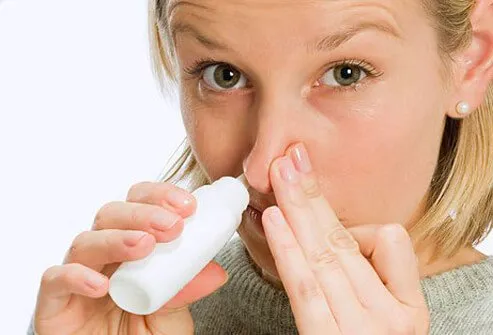Why Your Throat Hurts

Your throat aches and burns. It's painful to swallow. You know something is wrong, but how bad is it? Will it get better without antibiotics? Or will you need to visit the doctor? Find relief from your sore throat, and discover whether or not you may have strep throat symptoms.
As you read, you will find the telltale signs and symptoms of strep and sore throat, as well as treatment options for both. It’s important to know what is causing your symptoms, because treatments for different kinds of throat infections vary.
What Is Strep Throat?
Strep throat is always caused by a bacterial infection. Group A Streptococcus bacteria ("group A strep") infects the throat and the tonsils, and it will quickly respond to antibiotics.
What Is the Common Sore Throat?
A sore throat can be quite painful, but it is not as painful as strep throat. When you have the common cold, the cause is usually a virus. This means it will not respond to antibiotics.
Even if it’s not strep, you may need to see a doctor for relief. It’s time to see the doctor if your symptoms
- last longer than a week,
- keep coming back,
- make your voice hoarse for more than two weeks,
- cause dehydration, or
- worry you in some other way.
What Does Strep Throat Look Like? Symptoms

Do you know what strep throat looks like? Some of the signs of strep throat will be visible. They may include
- white patches on the tonsils or throat,
- dark red splotches or spots on the roof of the mouth, and
- a skin rash.
Those white spots in the photo are pus pockets. In addition, some patients may exhibit swollen, tender lymph nodes in the neck and some with fever above about 101-102 F. The signs and symptoms are the same for both children and adults.
Although these things may indicate strep, a visit to the doctor is necessary to make a full determination. A full diagnosis is impossible by visual signs alone.
Adults are less likely to have this disease than children. For school-age children, their odds of a sore throat being strep are about 20% to 30%. For adults, the odds are more like 5% to 15%.
Sore Throat Causes

Sore throats are often caused by viruses, making them difficult to cure. They can also be caused by
- dry air,
- irritants like pollution,
- smoke, including cigarette smoke, and
- allergies.
Unlike strep throat, everyday sore throats usually go away on their own without any antibiotic treatment. In fact, antibiotics are useless against viral infections like colds and the flu, the most common causes of the diseases that cause sore throat.
Beyond the throat itself, a few more symptoms include
- runny nose,
- watery eyes,
- cough,
- sneezing,
- post-nasal drip, and
- a low fever (below 101 F).
Swollen lymph nodes under the chin and the front of the neck could indicate any kind of infection. They could accompany an ear infection or sinus infection, for example.
Fever

If your fever is higher than 101 F, it's usually a sign of strep throat infection. Sometimes strep comes with a lower fever as well, though, so not having a high fever does not necessarily mean you're free and clear.
Strep Throat and Rheumatic Fever
Infection from strep bacteria can cause fevers to go from bad to worse. That's one big reason why treatment with antibiotics matters so much. Without treatment, rheumatic fever can set in, usually about two weeks to a month after signs infection first appear.
Rheumatic fever is much more than just a fever—it may cause severe joint, heart, skin, and brain problems. It can damage heart valves as well. Although it continues to be a problem in the developing world, rheumatic fever is rare in the United States and other developed nations.
Do You Have Swollen Lymph Nodes?

Strep throat can be spread person-to-person through direct contact, especially when mucus droplets from the mouth are spread, as in the case of kissing. It can also be spread through indirect contact by sharing things like cups, forks, and spoons.
If you don’t get antibiotics, your strep infection will be contagious for about two to three weeks after infection. But once you start taking an antibiotics regimen, your potential to infect others disappears after about 24 hours.
For this reason, the CDC recommends that people with strep stay home from work, school, and daycare until their fever is gone or they have taken antibiotics for at least 24 hours.
How Long Does Strep Throat Last?

After becoming infected, it usually takes about two to five days to fall ill.
- Without antibiotic treatment, strep throat can last 10-12 days.
- The infection is likely to get better within three to five days after an antibiotic treatment is begun.
Earlier treatment helps prevent more serious related conditions like rheumatic fever.
Scarlet Fever

If your sore throat is associated with a fine, sandpaper-like pink rash on the skin, it could be scarlet fever, which is definitely associated with the bacteria that causes strep throat. If this occurs, see a doctor immediately.
Symptoms include
- a very red, sore throat,
- bright red skin under arms, at the elbows and in the creases of the groin,
- a “strawberry” tongue that appears red and bumpy,
- nausea,
- vomiting, and
- abdominal pain.
Long-term, scarlet fever can lead to serious health problems. These include
- rheumatic fever,
- kidney disease,
- ear infections,
- arthritis,
- pneumonia, and
- skin infections.
Scarlet fever can be treated with antibiotics.
Strep Is a Bacterial Infection

Most sore throats are caused by viruses, or are side effects of infections in other parts of the nose or sinuses. However, strep throat comes from a common bacterial group, Group A Streptococcus, also known as Streptococcus pyogenes.
Group A strep bacteria are some of the most common disease-causing bacteria in humans. About 5% to 15% of all people have the bacterium in their bodies without showing any signs or symptoms of infection. Only humans carry group A strep bacteria.
Group A strep can cause a whole range of health problems, from strep throat and scarlet fever to skin diseases like impetigo and cellulitis. It can cause the devastating flesh-eating disease necrotizing fasciitis, too, which kills about one quarter of its victims.
It is important to determine if your infection is caused by strep, as antibiotics are prescribed to decrease the chance of complications.
Antibiotics Won’t Stop a Common Sore Throat

Because strep throat is caused by a bacterium, bacteria-fighting antibiotics are usually used to cure the disease. This disease is less contagious and its symptoms dramatically improve after antibiotics have been properly administered.
It's important not to overuse antibiotics though. Overuse of antibiotics threatens to create "superbugs," microbes that are resistant to antibiotics. Every year in the United States, at least 2 million people are infected with antibiotic-resistant bacteria.
To avoid contributing to this growing health problem, don’t try to treat viral or fungal illnesses with antibiotics. Antibiotics do not provide any benefit against viral or fungal infections. The only result of using antibiotics in these cases is the further proliferation of superbugs.
Antibiotics do not get rid of sore throats caused by the common cold. The common cold is caused by a virus, and antibiotics will not help.
Rapid Strep Test and Oral Culture

Just looking at a patient's throat is not enough to diagnose strep throat, so your doctor will want to perform a test to be sure. The rapid strep test is attempted first to make a quick determination of the possible presence of strep-causing bacteria in a patient's throat.
To perform a rapid strep test, a doctor will swab both tonsils and the back of the mouth. True to its name, a rapid strep test takes about 10-15 minutes to provide results.
About 5% of the time, a strep test will turn out negative even if strep bacteria are causing one’s illness. If a doctor still suspects strep, he or she will follow up with a throat culture.
Throat cultures are performed the same way from a patient’s point of view. The tonsils and back of the mouth are swabbed once more. Then the throat culture is sent away for further testing. Results will take a day or two to return.
When Do You Need Antibiotics?

If your doctor diagnoses you with strep throat, you will be prescribed antibiotics or given an antibiotic shot to treat it. You need to finish the entire course of antibiotics—even if you feel better before they are finished—so the bacterial infection won’t reoccur. Early treatment of strep with antibiotics may prevent scarlet fever. Strep is still contagious even if you are taking antibiotics (such as amoxicillin), so follow these steps to protect others from further infection:
- Wash your hands frequently.
- Don't share food or utensils.
- Throw away your toothbrush when your strep infection has resolved.
What if It’s Tonsillitis or Pharyngitis?

Tonsillitis shares a lot of its symptoms with strep. It can cause your tonsils to ache for days and days, and may leave them covered in white or yellow patches. It can make it hard to swallow. But tonsillitis is not the same as strep.
Only one bacterial type causes strep. But tonsillitis can have many causes, and usually the cause is non-bacterial. That means antibiotics usually won’t help. To be certain, you can ask your doctor to swab your throat. Results take 2-3 days.
The Difference Between Tonsillitis and Pharyngitis
Tonsillitis and pharyngitis refer to the same type of infection. The only difference is where the infection appears. You probably guessed that your tonsils get tonsillitis. Pharyngitis occurs in your throat.
Prevention

No matter the cause, you can prevent throat infections by following some basic precautions:
Home Remedies

Sometimes home remedies do a good job of easing sore throat pain and discomfort. However, if symptoms worsen with home remedy treatments, you should see a medical caregiver (see slide 20).
Here are a few home remedies:
- Gargle salt water: Stir 1/2 tsp of salt into 1 cup of warm water. You can gargle this salt water solution several times a day. This helps loosen mucus and draws excess fluid out of your inflamed throat tissue.
- Throat lozenges: over-the-counter throat lozenges and hard candy can help ease the pain.
- Throat sprays: These can help numb the throat, which helps to stop the pain.
- Tea with honey: Honey has been shown to relieve throat irritation, and hot water from a mild tea can do the same.
Remedies are aimed at keeping the throat moist, as well as symptom relief; humidifiers and vaporizers are used.
Humidifiers and Vaporizers

Part of the pain and irritation of a sore throat comes from having a dry throat. One solution is to plug in a humidifier or vaporizer to increase the humidity in your room.
If you don’t have a vaporizer or humidifier, another solution is to hold your head over hot, steaming water. Put a towel over your head to hold the moist steam close to your face, and breathe in as deeply as you comfortably can.
Sore Throat Home Remedies: Warm Compress

One of the effective methods of relieving pain comes from applying heat. Keeping the throat warm may help soothe tender lymph nodes. Use a warm compress on your neck to help relieve the pain. This can be done via a
- towel soaked in hot water,
- a heating pad, or
- a hot water bottle.
Soothing Foods

While keeping your throat warm can relax the throat muscles, cold foods can numb the pain.
Wondering what to eat when your throat aches? Soft, cool foods are good choices. Try these:
- ice cream
- milkshakes
- gelatin
- pudding
- frozen fruits like bananas and blueberries
- ice chips
The coolness of the food soothes the pain, and soft foods are easy to swallow past the inflamed areas.
Hydration

Staying hydrated helps your body fight off a throat infection. Here are some tips to help make sure you stay well-hydrated:
- Drink plenty of water.
- Use a straw to sip water or other fluids to make it easier for the fluid to go down the middle of the throat.
- Avoid citrus juices or alcoholic beverages when fighting an infection. Citrus juices can be painful on swollen, tender skin. Alcoholic beverages will actually dry out your body, doing more harm than good in the long run.
What Helps a Sore Throat? Pain Relievers

To help relieve the pain, over-the-counter pain relievers may be used. These include
- ibuprofen (Advil, Motrin),
- acetaminophen (Tylenol), or
- naproxen (Aleve).
Children and teens should not be given aspirin due to the risk of Reye’s syndrome, which can be fatal.
Sprays and Lozenges

Over-the-counter numbing sprays or lozenges are helpful to relieve sore throat pain. A lozenge or sugar-free hard candy can help relax the throat, and lozenges and throat sprays sometimes include additional helpful ingredients, such as
- anesthetics, which reduce pain,
- cooling agents, which help numb pain,
- anti-inflammatory agents, which can help reduce swollen tissue, and
- antiseptic agents, which help reduce the growth of harmful microorganisms.
Decongestants

Sometimes postnasal drip is the cause of an irritated throat. If that’s the case, decongestant sprays or pills may help relieve congestion and some other symptoms. Some common sprays and pills include
- Afrin
- Contac
- Mucinex
- Sudafed (suphedrine)
- Zicam
Be sure to use these products as directed, and consult your doctor before taking decongestants if you are taking other medications.
When Your Pain Persists

A sore throat that does not respond to initial medical treatment may be a sign of another cause. For example:
- mononucleosis (a sexually transmitted disease),
- tumors in the throat,
- meningitis, or
- acid reflux.
See your doctor if you have been treated for strep throat and it has not improved or resolved within three to four days.
Sore Throat or Strep Throat? How to Tell the Difference
This tool does not provide medical advice. See additional information: 
© 1996-2024 WebMD, LLC. All rights reserved.
